A little over a year ago, my family conceived a plan to enjoy the fruits of American imperialism. We began to save and otherwise make arrangements for a trip to the Hawaiian islands that began on June 2 and ended on June 15.
The first order of business, however, was a brief detour for my niece’s graduation at a high school in the Dallas, Texas area which took place at the University of North Texas “Snake Pit” – a very cool facility. The proceedings were very Texas. Members of a cub scout troop or, probably, boy scout troop were called upon to “present colors.” The jarring contrast between the pretense of military solemnity and gravitas on one hand and the reality of a couple of kids carrying a flag – in light of my stereotyped notions about Texas – almost gave me the giggles. Then there were the frequent nods to the importance of Christianity – at least two official prayers plus a couple of students bearing witness to the power of Christ aiding them in getting their high school diplomas. If I were a non-Christian student, I would have felt very much like a second class citizen at this public school. Certainly there were more references to God in that ceremony than there were to education. (Perhaps aware of my less than Texan religious patriotism, my bag didn’t make it onto our plane from Chicago to Dallas, despite being checked at the same time as my wife’s bag which did make it. When it arrived at our hotel in Dallas late that night, it had an “Inspected by TSA” tag.)
But, that was Texas. On to Hawaii!
The flight is a long one. After a brief jump from Dallas to Phoenix, the flight over the Pacific took 5-6 hours from Phoenix. We flew into Kailua-Kona on the west side of the Big Island on June 2. I had been warned not to judge Hawaii by the Kona airport. It’s on a lava field and is a bit like landing on the moon. That, at least, did not catch me by surprise. What did strike me a bit was the small, open-air nature of the airport. I’d never seen an outdoor baggage claim before. No worries – the weather was nice. The weather is just about *always* pleasant in Kailua-Kona. The big mountains (Mauna Lea and Mauna Kea) to the east squeeze out most of the moisture from the prevailing winds coming out of the east over the Pacific. From the airport, a shuttle driver took us to get our rental car. The shuttle driver was a nice guy who was, no doubt, hamming up his Hawaiian schtick for the tourists to whom he was catering. His patter about Hawaii wasn’t a sham, necessarily, but he knew his clientele. The folks at Budget, where we got our rental, who weren’t working for a tip, were much more leisurely about moving the line. But, no worries, we’re in Hawaii with a long vacation ahead of us. Pictured is Harper who brought her American Girl doll, Kanani. Kanani did not fit in Harper’s already full backpack, so Harper had to expend a great deal of effort carrying the doll separately through all of the airports and whatnot. But, according to Harper, Kanani was Hawaiian, so she needed to go to Hawaii! Fair enough.
We vacationed with some friends of ours from West Lafayette, a family of six. The ten of us:
So, we rented a house that could accommodate the 10 of us. And we found a great one. (“We” — who am I kidding? My role in the planning was minimal. I had more of a role in the financial support end of things. The wives in the two families did the heavy lifting.)
The house was nice, comfortable, and well-furnished generally, but the in my mind, the best part was the lanai. It faced the Pacific and had a great view. It had a comfortable set of couches with a coffee table on one end and a big dinner table that sat our whole crew on the other. The temperature was pleasant at all hours out there. I was occasionally struck by the difference in temperature between the court yard with the pool versus the lanai. The former could be hot and a little stifling while the latter never was. The breeze, which is pretty dependable, really makes a difference.
The dinner table was no small selling point. Having a table that accommodates 10 people is good. Having one that lets you see the sun set over the Pacific every night is terrific! And, not for nothing, eating at “home” was a bonus. We weren’t trying to be stingy and do enjoy eating out, but the logistics and expense of feeding 10 people at Hawaiian restaurants can get a little daunting. So, about half the nights, we stocked up on groceries (I became partial to the KTA), and I put my mastery of poolside grills to work.
Other things that became staples of our visit:
Fresh fruit – My friend Jason, in particular, was diligent in making sure we had a never ending supply of pineapple, mango, and papaya cut up and ready to go. He got a good bit of that fruit from the local farmer’s market.
Hawaiian Radio – Both families, without discussing the matter, defaulted to radio stations featuring Hawaiian music. In particular, I liked Native FM, and have apparently become a fan of the Mauna Kea protest song genre. (See, e.g., Sudden Rush “We are (Mauna Kea)” and “Rise Up” by Ryan Hiraoka featuring Keala Kawaauhau). There was also a pretty great Hawaiian-style remake of David Lindley’s “She Took Off My Romeos” by Ho’aikane.
Local microbrews – While we were on the Kona side of the island, the Kona Brewing Company supplied our beer. (Of note to my fellow Hoosiers – I was able to buy cold beer at a gas station on Sunday. Paradise!) I became partial to the Fire Rock Pale Ale. While the beer was good, I have to say that our dinner at the Kona Brewing Co. was probably the most disappointing meal on the island. The server was impatient, and the menu had a TGI Chotchkies feel to it.
One of the few itinerary items I imposed on the group was to go see the Captain Cook monument on the north shore of Kealakekua Bay where Cook first encountered the Hawaiians and was later killed by them. The original plan was to hike there. The monument is not accessible by road, and the hike involves getting to the bottom of (then climbing back up) a 1,500 foot cliff that descends to the bay. Given that our group included some younger kids, we abandoned that plan and, instead, signed up for a kayak/snorkeling tour. This was a great decision. We ended up arranging kayaking through the Aloha Kayak Co. on short notice, mainly because they were set up for on-line booking. The owner and central office are a little disorganized and sketchy, but the guide and experience were outstanding. When we showed up, the guy who was there seemed a little unsure of himself. The owner showed up a little later. He wasn’t unsure of himself but was one of these hyperactive, keyed up, over confident, ADHD and/or meth-addled types. Prior to the tour, he gave us a history lesson about Cook and Hawaii that was, in a few instances, historically accurate. But, mainly the lesson took every opportunity to use scraps of history and pseudo-history in ways that minimized or demonized Cook. (For example, the kayak company owner had the Spanish regularly visiting Hawaii for centuries prior to Cook’s arrival as part of the Spanish route between the Philippines and Central America – there is, at best, speculation that the Spanish may have stumbled across the islands at some point.)
Once we got underway, however, and met our tour guide, John, the expedition was outstanding. Kealekekua Bay is simply one of the most beautiful places on the planet. We probably saw a dozen spinner dolphins up close and personal as we kayaked the mile or so across the bay. We stopped and looked briefly at the Cook memorial, but the monument itself is pretty obviously a disfavored place among the locals — at least those we encountered. The kids and I had fun joking about how we were also going to Great Britain, since the chained off parts of the memorial were apparently deeded to Great Britain in 1877. The main feature became the snorkeling. It was my first time snorkeling, and it was incredible. My daughter, Harper, was the first one in, popped her head in the water for about five seconds, then popped up, proclaiming, “This is awesome!” The rest of us hurried to get in there with her. And it was, in fact, awesome. The amount and variety of the sea life under there was pretty incredible. Before that, I had heard friends rave about snorkeling but didn’t really understand the point of the gear. Just stick your face in the water. Now I get it. The ability to see and float – aided by being flat on your face – is magnified to a great extent with the gear, and in places like that Bay, there is a tremendous amount to see.
Getting out of the landing spot near the monument and into the Bay was tricky due to the weather conditions. The tide made it necessary to time the waves a little bit in order to clear the rocks safely. It seemed a little dicey to us, but chatting with our guide, John, it sounds like the weather conditions had changed enough to where we were glad to be ignorant about the difficulties John had to consider when getting us out of there. We left our phones behind on the advice of the tour company to avoid damaging them in the water. So, I don’t really have any pictures of that expedition. However, pictured to the left is Tacos 2 Day which was absolutely the best thing for our crew, ravenous after a day on the water.
Tacos 2 Day is open on Fridays and Saturdays, and is basically a grill under a roof with some card tables for those who want to dine there. I’m told it is operated as a fundraiser for a local church. In any event, Jason and I went and fetched piles of tacos (chicken, asada, and chorizo) which the family annihilated in short order. They were good, and the family was hungry. Thumbs up! Another good, no frills dining option we enjoyed was Ultimate Burger. Some members of our group wanted very good burgers or decent burgers. No dice. Ultimate Burger is *not* messing around. Those grass fed, ultimate burgers were pricey but delicious.
Jason and I did make one expedition without the family and kids. We drove down to South Point (Ka Lae) and then hiked over to Papakolea Beach which is one of four beaches on the planet with green sand.
The drive from Kailua-Kona to South Point is interesting. You drive from the relatively affluent city through a couple of less prosperous towns that amount to suburbs, then into the country, then to what feels like the edge of the earth. Turning off Highway 11 just after making a turn at its southwestern corner, and driving down the one-lane South Point Road starts to feel like one of those dreams where you are running in place. Something about the perspective of the wide open territory descending to the coast makes it look like you are constantly almost there. But, finally, you get to the end of the road and it feels very isolated. Set up at the cliffs above the ocean just off the edge of the road are some four wheel drive vehicles, trucks and whatnot, anchoring tarp-shelters used by locals fishing off the edge. We were there early on a Saturday morning – whether this was a weekend thing or a day-to-day occupation, I couldn’t say. We snapped our pictures and tried not to disturb them.
Back up the road just a little bit, there is a fork that takes you east about a quarter mile to the parking lot and trail head for Papakolea Beach. Because we got there so early, the parking lot did not have any activity. There were more trucks parked next to tarp-awnings at one side of the lot and then a big open space for more parking, but because there were no cars, it wasn’t entirely clear if there were “rules” about where you should park. I just picked a likely spot and parked the car. When we got back, the lot had started to fill in and the trucks turned out to be those of impromptu vendors who set up to sell drinks and four wheel rides to tourists such as myself. The “trail” wasn’t so much a trail as a sprawling network of ruts formed as vehicles cut into the extremely soft ground then had to work out new routes to the beach as the old ones became impossible to navigate.
The hike to the beach was a relatively easy 2.5 – 3 miles through and on these ruts. However, as it turned out, we were lucky because the wind was relatively light. When we returned, the wind (on the south edge of the island, keep in mind) was it’s normal strength out of the east, which would have made the hike somewhat more challenging. At the end, the beach is set in a sort of crescent cut out of the surrounding cliff face. It involved a bit of a scramble down the west wall of the beach, but only because we had not seen that, on the north east side of the beach, a ladder has been hooked into the cliff face running down to an easier descent. On the way down, there was a particular 4 foot drop that seemed like it was going to be tricky to get back up. I’m afraid that the color does not show up very well in the picture to the left, but the sand really is green. It’s sort of an olive color and comes from the olivine in the soil. There are apparently three other green sand beaches – one in Guam, one in the Galapagos, and one in Norway. When we got there, there were two other pairs of travelers. One was a fast-moving younger couple who overtook us at the cliffs, were not much for chit-chat, and practically flew down to the beach. I was, for some reason, gratified when they were thwarted by the cliffs going back the way we came and only discovered the ladder route after we had navigated it. The other was a friendly older couple who navigated the cliffs more slowly but seemed to be having a blast when they got there. After about 20 minutes on the beach, we started our return trip, and there was quite a bit of traffic heading the other way. We fielded a lot of questions about “how much longer” and “is it worth the hike?” (Answers: “not too much further” and “yes it’s worth it.”) There was another group where what looked to be a son asked if what looked to be his father would be able to get to the beach. We gave equivocal answers on that because the cliff takes a bit of doing and, frankly, the real answer was that you never know what an individual can do and, from outward appearances, the son would have more trouble than the father. But it would have been impolitic to volunteer that observation, so we didn’t.
Our guys-only morning trip to the south side aside, most of the trip was family time. One of the excursions we made with the whole crew was a trip to Keawaiki Beach with its black sand and a lonely palm tree that (if you’re looking for it) you can spot from Highway 19, a few miles north of the Kona Airport. The hike did not begin auspiciously. There is a spot to pull off the highway with a rutted edge that you have to hit at the correct angle to avoid bottoming out your car. Our friends’ three year old got out of the van and managed to fall and cut himself on a shattered beer bottle within the first 90 seconds. Being cut on a beer bottle is remarkable mostly because there is a vastly better opportunity to cut yourself on the a’a rock that covered most of the hike. (A’a is a type of rock formed from lava flow that turns into porous and extremely jagged individual chunks of rock.) The trail starts as a lava road and then takes a turn into a path over the a’a once at the point where some private property owners threw up a barbed wire fence. (This is probably property belonging to the family of former legislator and champion golfer, Francis Brown.) I was somewhat surprised to find that my kids had never, apparently, encountered barbed wire in person before. (Seems like my childhood featured a good bit of barbed wire while I was running around farms or woods). They had it mixed up with electric fences. I am pleased to say that the kids held up very well in the heat of midday as we trudged over the shadeless lava rock. (All things told, this hike was probably about 4 miles round trip.) When we got to the beach, we threw our gear under the Lone Palm Tree and the kids got a bunch of black sand in their swim suits as they played in the surf – periodically scaring us to death as we probably worried overly much about the undertow and rocks on this wild coast.
From there, we hiked north along the crest of the black sand dune and eventually cut back east on a trail to the Golden Ponds of Ke-awa-iki. I’m afraid I neglected to take my own picture of the Golden Ponds, so you can see another person’s pictures here and here. The ponds are fresh water and are a little amazing inasmuch as they are an oasis of life in the middle of the lifeless a’a. The gold color comes from gold color algae that grows on the rocks underwater. After refreshing ourselves there for a little while, we finished the loop heading back to the cars. I regret that we didn’t get a chance to hike a section of the King’s Trail that crossed our path. It is an amazing looking trail cut through the rock heading north and south for what looked to be miles. The original trail was built between 1836 and 1855 and went around most of the island.
Several of our days were spent just hanging out at the beach. My favorite was Hapuna Beach where the boogie boarding for an amateur such as myself was fantastic. Surfing is beyond me, but from this coastline boogie boarding, I got a sense of the fun involved with waiting for just the right wave, then timing it so you get a great ride. A couple of times, I misjudged it and went into the washing machine under the water. One of those involved getting thrown to the sand at an angle which – had it been an inch or two shallower – would have put my neck in a challenging position.
During the beach visits, our families burned through the sunscreen at a furious rate because it was pretty obvious what the tropical sun was going to do to the skin of pale northerners such as ourselves if we were not diligent. There were a couple of burn spots here and there, but by and large, we did a pretty good job of avoiding that misery. In addition to Hapuna, we went to a beach at Manini’owali in Kua Bay. This was a sandy, friendly beach we found on our first full day after an abortive attempt at a rocky death trap which is apparently not far from a good beach we simply could not reach without a four wheel drive vehicle with good clearance. Another day was spent at Kahaluu Beach Park in Kailua-Kona. The snorkeling wasn’t as good as Kealakakua Bay but there was an awful lot to see, and it was right in town with snorkel gear to rent from a truck on-site. I forget the name of the rental organization, but it seemed to be an educational outfit of some sort using the rentals to raise money for their efforts – so the people were friendly and the prices were reasonable.
Another fun outing we had was to Pu’uhonua O Honaunau National Historical Park just down the road from Kaleakakua Bay. The Hawaiian kapu system could be pretty harsh. You could be put to death for eating the wrong thing. But the system had a safety valve, the puuhonua. If you could reach one of these sanctuaries, your sins would be forgiven. The Pu’uhonua O Honaunau was attached to royal grounds on a cove offering yet another spectacular view of the sunset. As it turns out, the Big Island is full of these spectacular views.
Before leaving Kona, we attended a luau. It is clearly tourist-bait – ours was at the Sheraton – but fun and well done nonetheless. It was the Haleo Luau put on by Island Breeze Productions. The M.C., going by the name of Auntie Tutu was fantastic. The warmth and charisma she was able to project was remarkable. More so when you consider that she has to do it repeatedly for audience after audience. But maybe that’s just the mai tais talking. They handed those out before dinner while you had the opportunity to play some island games, get some stamp “tattoos” from the performers, and get some rudimentary instruction in hula. The food was good, featuring some traditional foods like poi, lomi lomi, and ahi poke. The poke was good, but I’m afraid I over did it and the texture of the stuff got to me after awhile. After the dinner, the show started – featuring dancers and music along with narration by Auntie Tutu about Hawaiian and Pacific Islander history. The highlight of the show was a fire dance featuring a big Hawaiian guy named Tomassi. (My buddy says, “not with all the steroids in Tippecanoe County could I look like that.”) By the end of the routine, he’s twirling a pair of batons with flaming ends. I think Purdue should ditch the Golden Girls and try to recruit him.
After a week in Kailua Kona, we moved east across the island to Hilo. Despite greeting us with rainbows, I’m afraid to say that Hilo didn’t really compare as a tourist’s paradise. Hilo has rain and more of a working class vibe than a tourist destination. Also contributing was that the selection of rental places suitable for a party of 10 is limited. The place we got seemed to offer what we wanted, but not mentioned in the rental information was the fact that the downstairs with a lot of beds where we anticipated putting all the kids did not have inside access to the two bedroom upstairs where we anticipated putting the adults. Instead, it was more of a separate apartment. Some of the kids were pretty young and so the idea of going outside at night, navigating the stairs and coming back inside if they needed mom or dad was pretty intimidating. As it happened, both adult couples featured one “troubled” sleeper and one person who traditionally fell asleep fast and under any circumstance. So, the good sleepers among the adults took turns shacking up with the room full of kids. It worked out, but that contributed to a feeling that Hilo was less comfortable than Kona.
However, on the way to Kona, I had some great meals. I have, perhaps, had individual meals that were better than lunch and dinner that day, but I’ve never had back-to-back meals that compared. Lunch was in the little town of Honoka’a on the northern coast of the Big Island. The down town features historical information about the plantations that formed the backbone of its economy, its status as a destination for soldiers and sailors stationed on the island, and the devastating tsunami of 1946. I had not known that one of the waves of immigrant workers recruited to work the sugar fields had come from Portugal. Gramma’s Kitchen was opened on the site of the Paradise Restaurant on the “Long Soup Corner” by people with Portuguese roots. We did not particularly take advantage of any Portuguese offerings, but I had the best corned beef hash I’ve ever had. Corned beef hash is one of those meals that can run the spectrum in terms of quality. When this one came out, it looked like it might be over done and dry. But I was wrong. Oh so wrong. I don’t know what they did, but every bite was outstanding. This was topped off with generous amounts of egg, hash browns, toast, and Kona coffee. Amy and Jason had enormous, cake-like servings of french toast. Everybody was terribly happy with this meal.
In between meals, we went zip lining at Umaumau Falls. The people here did a good job with the zip lining. Even those members of our crew with a fear of heights got through it with a minimum of anxiety. The views are terrific, and the staff was very friendly. My only critique is that they hit you up for a tip at the end. I don’t mind compensating people for good service, and our guides certainly did good work. But this was already kind of pricey. When you go to a restaurant, you know it’s expected and it’s fine. Not having been zip-lining before, I was caught off guard. Having already paid $200 per head, I figured the financial end of things was concluded and that if they needed more to pay their staff, they wouldn’t be shy about baking that into the price. But, overall that’s a small concern. By the end, I was hanging upside down with my arms, having a blast.
The last meal of the day was suggested by a web development client of Amy’s who lives on the Big Island and met up with us. It was in Hilo at the Hawaiian Style Cafe. Having just read about the Long Soup Corner’s tradition of serving saimin – a dish I hadn’t heard of – I went with the saimin on the menu.
Inspired by Japanese ramen, Chinese mein, and Filipino pancit, saimin was improved during Hawaii’s plantation era. It is a soup dish of soft wheat egg noodles served in hot dashi garnished with green onions. Kamaboko, char siu, sliced Spam, linguiça, and nori may be added, among other additions.
I have very little idea what variation the Hawaiian Style Cafe served up. All I know is that it was delicious. At that meal, I was also introduced to the Mahana Brewing Company with its Volcano Red Ale. Having switched sides of the island, I also switched from Kona to Mahana for my beers.
The first full day in Kona was basically a rest day. In the morning, we went down to the small beach across the street and played in the water. The beach was small and there were a lot of rocks, so we weren’t terribly active. But, by this time, the kids were exhausted and, while they were having fun, the emotional outbursts were coming a little more often; so we thought a little rest was in order.
The second full day in Kona we went to Hawaii Volcanoes National Park which was a primary reason (along with the zip lining) for making the transition from Kona to Hilo. Back when they were little, they developed mixed feelings about Hawaii – volcanoes = bad; beaches = good. At the time, they asked if they could go to “beach Hawaii” and not go to “volcano Hawaii.” I’m happy to say that their attitude had changed and they both wanted to go to volcano Hawaii. Once again, the place is remarkable. Just the idea of seeing land that is younger than I am is a little disorienting. The park abounds with messages about just how dangerous the area is. In fact, we’re all probably idiots for even going to the park. The graphics featuring the horrific consequences of ignoring the park warnings on the sign to the left was my favorite.
I used to have this vague, likely cartoon-inspired idea that the caldera of a volcano was the hole that was formed when the volcano blew its lava out. But, what really happens is that the volcano erupts somewhere along its flanks and the caldera is more like a sink hole that drops down to fill the space evacuated by the contents of the eruption. We did not get to see any flowing lava on our trip (missed it by a week or so), but the summit caldera at Kiluea is still pretty impressive.
The last thing we saw at Hawaii Volcanoes NP was the sea arch. It is just kind of a cool formation where the ocean has worn away an arch into a lava outcropping. One day that arch is going to collapse, and I expect it will be spectacular to see. A sign in that area explained how the geological hot spot that formed the Hawaiian islands was off the coast about 25 miles, forming land that`s still about 3,000 feet below sea level. The graphic did a good job of showing how the Hawaiian archipelago was formed as the Pacific plate slid over the hot spot.
And then, it was time to go home. The Hilo airport is slightly more sophisticated looking than the Kona airport, but the check in process was a little scattered. With a mix of Hawaiian Air, U.S. Air, and American Air flights ahead of us, it seemed pretty doubtful that our bags would make it to Chicago at the same time we did. There were a number of relatively minor missteps that started to wear on us as the journey went on. Google Maps took us to an industrial park behind the airport instead of to the rental return which, as it turned out, was just across the street from the terminal. Hawaiian Air inexplicably had us booked on a flight two hours later than the flight we had reserved. After consulting with the person on the counter and deciding that our nine year old did not, in fact, want to sit next to a stranger on the plane, we split the difference and took the one an hour later. Fortunately, our layover in Honolulu was originally three hours, so an hour didn’t make much of a difference. However, because we were switching airlines, we had to check in again to get seats, and had trouble finding a place to check in until a person finally showed up at the terminal gate desk. The Honolulu airport was an eye opener for a non-international traveler such as myself. You just get a sense that it’s a hub for getting to anywhere around the Pacific, and the world seems much smaller and more accessible when you’re there. Also, Cole finally found a Hawaii hat. Also, I found out that sushi out of an airport refrigerator can be surprisingly tasty.
Once out of Honolulu, the airtime got long and the check came due for those time zones we had picked up on the way out. We left Honolulu at 2 p.m. local and got to Phoenix at about 11 p.m. local. We left Phoenix at about midnight and got to Chicago at about 5:30 a.m. After waiting around uselessly at the baggage carousel and filing our lost luggage claim, we caught the shuttle to our car. The four wheel ruts on the way to Papakolea Beach apparently having nothing on the road between O`Hare and the Marriott. That was an insanely rough ride and made Harper car sick. We`re no strangers to her car sickness, but the lack of sleep was making everyone a lot chippier. Difficulties finding the parking documents and getting the gate to work to let us out of the parking lot did not help anything. But, finally, we made it out of Chicago and got back to Indiana at 10:30 local. From door-to-door, it took about 20 hours of travel time and 26 hours of clock time. I ended up sleeping for 11 hours, the airline delivered the bags to our house last night, and hopefully I`ll be rested and ready to return to work in the morning.
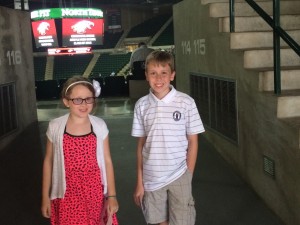
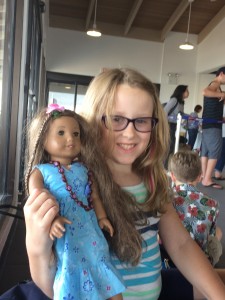
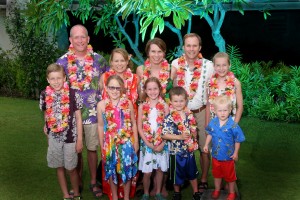
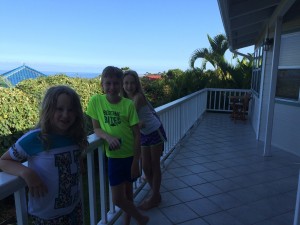
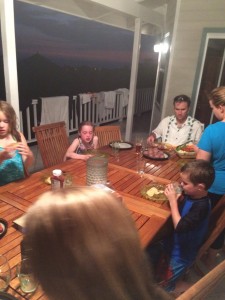
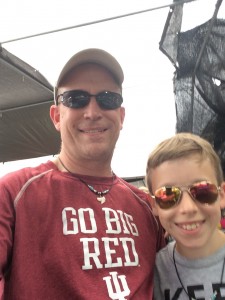
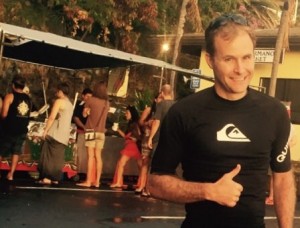
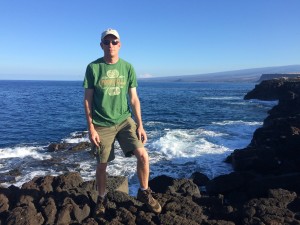

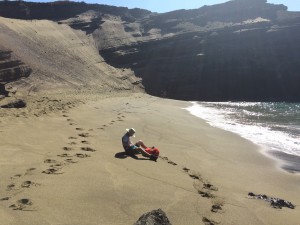
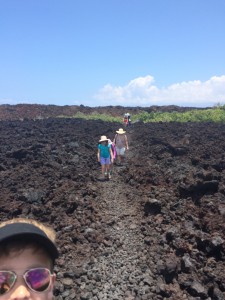

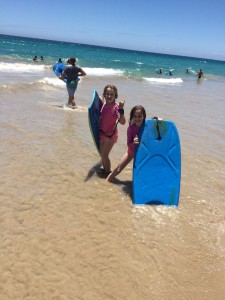
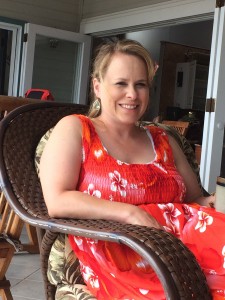
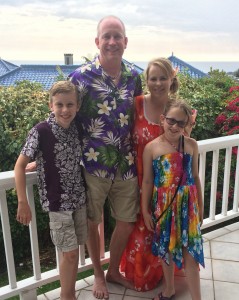
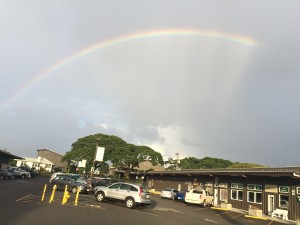
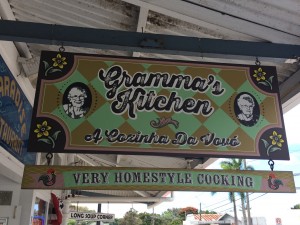
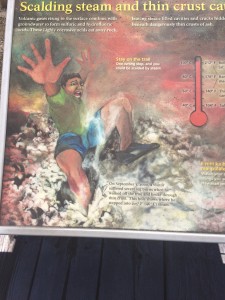
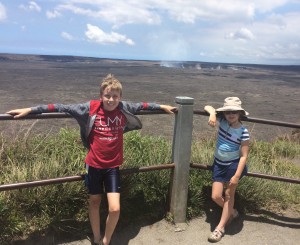

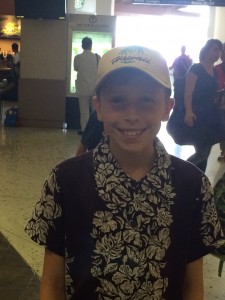
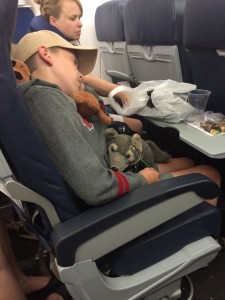
Awesome travelogue! I’ve been to Hawaii twice (4 islands in 1979; Maui in 2003). My favorite memory from the Big Island was hiking up on one of the volcanoes and actually getting the opportunity to jump over a lava flow (about 2-3″ wide).
Thanks! It was a great trip. Lava flow would’ve been cool, but I’m certainly not complaining.
Loved my two trips to Hawaii as well, some nice memories for sure. Thanks for prompting my remembrance.
Hey, maybe I’ll get to go again!
Dog, glad you and your family and friends enjoyed the vacation. It is hard to beat fresh pineapple, is it not.
Awesome trip post, I’m very jealous. (Of buying cold beer on Sunday, of course.)
Fantastic post, Doug! I well remember many of your experiences and impressions, particularly of driving down to South Point and also encountering the refreshing simplicity of the Kona airport. Just be prepared (assuming you aren’t already back) for some effects of jet lag on your return, especially if you do it without a stopover.
The jet lag has definitely been a factor. The whole family still seems to be off schedule, 4 days later.
Good post. I’ll bet you wish that stress-free feeling from the trip would last more than 72 hours.
I started reading your blog for your commentary on US history and bills making or not making their way through the the legislature. However, it is posts like this one that bring me out of any funk I am in over statehouse antics and political shenanigans. Thanks for sharing your fun with the online community.
Beautiful :)